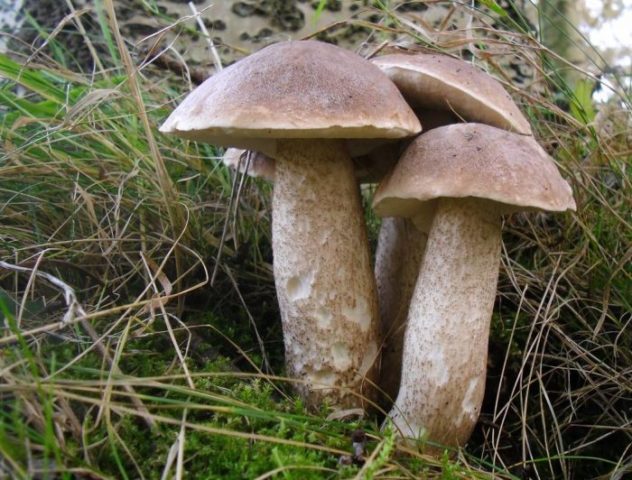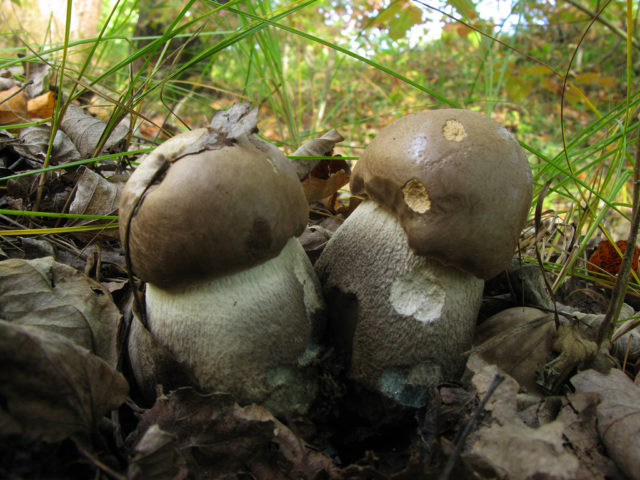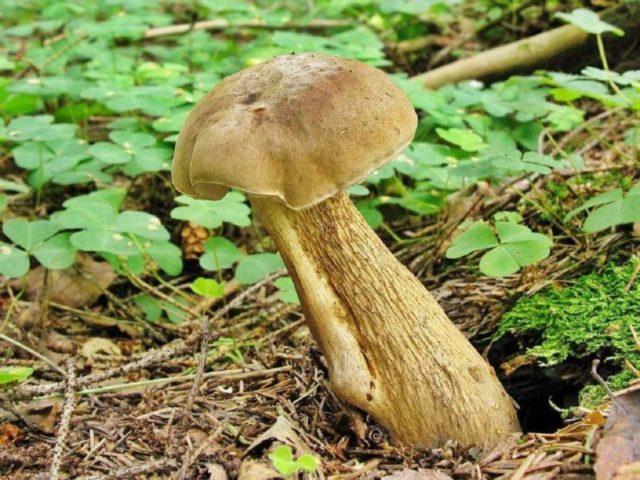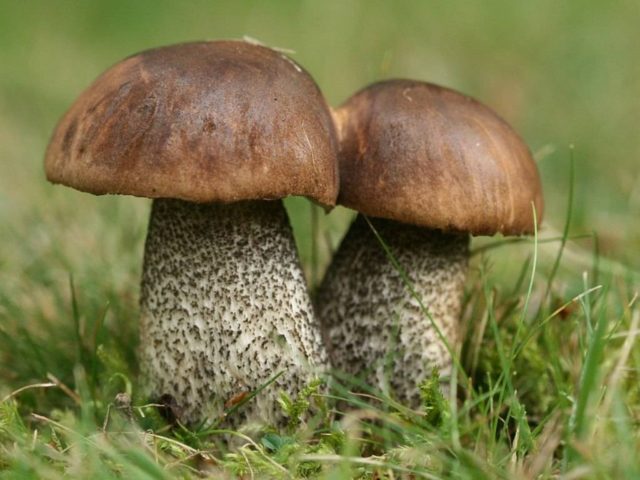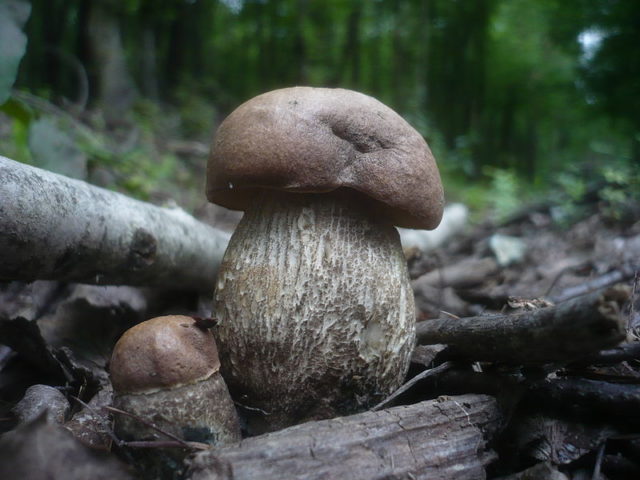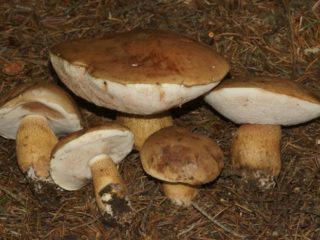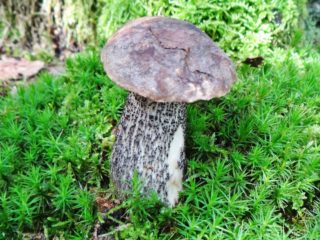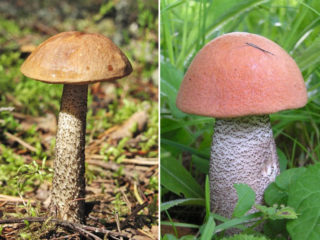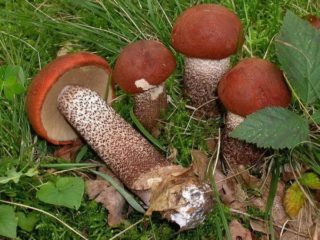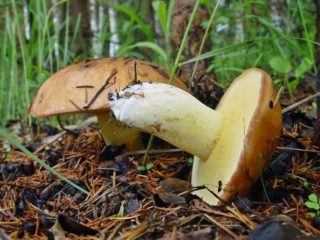Content
The boletus mushroom is a rather rare, but very tasty edible mushroom with numerous beneficial properties. To recognize it in the forest, you need to study the description and photo of the obedka in advance.
Where does the boletus grow?
The tough boletus is a fairly rare mushroom, but it can be found in both deciduous and mixed forests.It prefers dry calcareous, loamy and sandy soils, most often found under aspen and poplar trees. It is found both singly and in small groups of several fruiting bodies.
The main fruiting of the harsh boletus occurs in late summer and early autumn. You can see the first fruiting bodies as early as July, but the plant grows most actively from mid-August to October.
What does a stiff boletus look like?
The appearance is quite typical for representatives of the Boletov family. The tough boletus has a cap up to 15 cm in diameter. At a young age it is convex and half spherical, but in adult fruiting bodies it straightens out and looks more like a pillow. The center of the cap may be slightly depressed, the skin on it is smooth and matte, may be slightly pubescent, and in wet weather - slippery and sticky.
The color of the boletus cap can be ocher-brown, red-brown and gray-brown, sometimes a slight purple tint is noticeable. The cap is tubular on the underside, whitish in young fruiting bodies and grayish or creamy yellow in adults. When pressed, olive-brown spots remain on the tubular layer.
The stem of the stiff boletus is quite tall, from 5 to 16 cm in height, with a girth of up to 3 cm. The shape of the stem is cylindrical, regular, at the base the stem can slightly taper, and in structure it is dense and solid. The color of the leg is usually creamy, darker at the bottom, sometimes bluish at the base. The leg is covered with brown and black scales, larger at the base.
If you break a boletus, the flesh will be white and characteristically hard.When exposed to air, the flesh quickly turns pink or red, it tastes quite pleasant, and the boletus has a neutral mushroom smell.
Is it possible to eat the tough boletus?
The rare, harsh obabok is a good edible mushroom with a pleasant dense structure. The taste and aroma of boletus is appetizing, it is suitable for any culinary processing.
Taste qualities of mushroom
Fans rate the taste of the somewhat harsh obabok quite highly and especially note the dense structure of its pulp. It is recommended to boil, marinate and salt; in such preparations, it especially fully reveals its taste and crunchiness.
Benefits and harm to the body
Obabok is valued by mushroom pickers not only for its taste. It has numerous beneficial properties due to its diverse chemical composition. Boletus pulp contains vitamins, organic acids, minerals and other valuable compounds. The tough boletus is a valuable source of vegetable protein - it will be especially appropriate on a vegetarian table, since it will allow you to get the necessary substances without disrupting your diet.
With regular use, boletus:
- has a positive effect on the metabolic system and helps remove toxins from the body;
- strengthens the immune system and endurance of the body;
- promotes the growth of healthy muscle mass due to its high protein content;
- improves the condition of blood vessels and prevents the development of heart diseases;
- has a beneficial effect on the condition of hair and skin.
Eating a bit of a hard nut is very healthy, but you also need to remember the contraindications. Obabka should be avoided in case of chronic severe illnesses of the biliary system; an allergy to mushrooms is also an absolute contraindication. Those who suffer from a tendency to constipation should use boletus with caution - boletus, with its high protein content, can slow down the digestive processes.
False doubles
The stiff boletus can be confused with many species—primarily with the related boletus, which differ only slightly from the stiff boletus in color. The obabok has no overtly poisonous counterparts, but some similar counterparts are not suitable for consumption.
Gall mushroom
Most often, the edible mushroom is confused with the inedible mustard, or gall fungus. The similarity between the species lies in their similar structure - they have the same cushion-shaped or hemispherical caps when young, and strong, dense legs up to 15 cm in height.
You can distinguish the harsh boletus from the bitterweed by many nuances. In particular, the tubular layer of the gall fungus is pinkish, while that of the harsh fungus is grayish or almost white. The color of the cap of the bitterling is much lighter than that of the boletus. The leg of the mustard plant has a similar shade, but it does not have the scales characteristic of the harsh bitter gourd, but there is a mesh resembling large vessels.
Common boletus
The harsh boletus can be confused with an ordinary variety of boletus, since the structure of the mushrooms is identical. But the common obabok has a different shade of cap - the brown color on the skin is more pronounced and there are no grayish and purple tones, as in the harsh type.
In any case, it’s not dangerous to make a mistake—ordinary obabok is suitable for food consumption.
Collection rules
It is recommended to go to the forest for the tough boletus in mid-August or early September. During this period, the chances of encountering a mushroom are highest. You need to look for boletus under poplars, aspens and other deciduous trees, since it is rarely found in open areas.
You need to collect the harsh stuff in the depths of a clean forest. It is better not to put mushrooms growing near highways and industrial facilities in the basket. The pulp of fruiting bodies accumulates too many toxic substances from the environment.
Use
The edible, harsh obak requires primary processing. A mushroom brought from the forest is shaken off from adhering debris and soil, and then the scales are removed from its stem and washed under running water. The peeled fruiting bodies should be soaked in water for 20 minutes and then boiled for half an hour, skimming off the foam regularly.
Boiled tough obabki can be pickled, fried, salted for the winter, or added to culinary dishes in boiled form. Mushrooms delight with a pleasant taste no matter how they are prepared.It should be noted that the boletus pulp turns black during cooking - this is completely normal and does not affect the taste of the boletus.
Conclusion
The tough boletus is a not very common, but tasty edible mushroom with dense flesh. Meeting it in the forest is considered great luck, since obabok is suitable for all types of processing and brings great benefits to the body.

